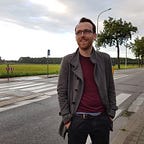How to turn milk green
Cow’s milk accounts for almost 3 % of global greenhouse gas emissions, but skimming the waste from dairy production in Europe could make the business much more sustainable.
Each year, around 140 million tonnes of raw milk is produced across Europe which requires an average energy input of 18 400 GWh. To put that into perspective, that’s enough to power Lithuania’s 1.35 million households for a year.
‘Most of the energy in dairy is used for heating and cooling,’ said Dr Christoph Glasner from the Fraunhofer Institute for Environmental, Safety, and Energy Technology in Germany.
Pasteurising and processing raw milk into cheese, yoghurt, curd or fresh milk, to name just a few, all require different degrees of heating and cooling. Then there is the energy demand for equipment sterilisation and lighting as well as the transport of dairy products, which is always chilled.
While some researchers are working to reduce the emissions from dairy cows themselves, others are looking to make an impact on the production side.
SUSMILK, an EU-funded project, is looking to save energy in the dairy industry by testing energy efficient and renewable technologies in different dairies across Europe.
‘We see a lot of potential for improvements by using technology that can easily fit into the dairy industry,’ said Dr Glasner, who is also the project manager of SUSMILK.
Energy
One of their dairies is in Spain and processes 50 000 litres per day and makes three types of cheese. They are testing combined solar and biomass heat systems to power parts of its facility. At another Spanish dairy, they are testing a chiller which takes in waste heat and uses this energy to power its refrigeration.
In a German dairy, they are testing a gas-driven and a high-temperature heat pump to evaluate energy savings. SUSMILK is also testing a technology to concentrate milk, thereby reducing dairies’ transport emissions.
‘By reducing the volume of milk you can reduce the amount of trucks on the roads,’ said Dr Glasner. ‘This milk concentrate could be very good for ice cream, cheese and yoghurt.’
To help other dairies become more efficient, SUSMILK will share the potential of these technologies at www.greendairy.net and offer another platform to identify ways to save resources.
‘We want to offer an online calculator where dairies can enter their characteristics and get answers on how to make improvements,’ said Dr Glasner.
In regions with a high concentration of milk production there are not just high levels of water use, but also of water pollution.
Effluent
One way to cut back the amount of water used by the dairy industry is to tackle the effluent, according to Dr Thomas Michael Scherer from the Fraunhofer Institute for Interfacial Engineering and Biotechnology in Germany.
Effluent is the wastewater that comes out of a treatment plant, factory or industry and is often discharged into a river or the sea, also causing severe environmental consequences, such as vast dead zones in the oceans.
However, it is possible to keep water within the dairy system and prevent these harmful impacts as well as saving resources, but first, you must identify where the water is used.
‘There are several process streams for several products which are combined in the end as an effluent,’ said Dr Scherer.
For example, specific chemicals or components are added to different cheeses to get certain flavours or consistencies. Then there is the cleaning process where acids, bases and some organic agents are added to clean different machines.
These sources often combine into one tank which creates a contaminated wastewater that makes it hard to treat, and the secret is to keep it separated.
‘If you prevent effluents being combined, water treatment is cheaper and more efficient,’ said Dr Scherer.
‘Proteins can be fractionated (separated) and be sold, whey effluent can be concentrated and conditioned to form products that can be used as a fertiliser or in other industries.
‘Some water doesn’t even need to be treated at all or can be handled by common municipal wastewater treatment plants.’
Dr Scherer is the project coordinator of REWAGEN, an EU-funded project developing a self-sustaining dairy wastewater treatment plant. Their system combines electrochemical technologies to treat different dairy effluents.
‘The goal is that every component that is processed within the water treatment is used for something afterwards,’ said Dr Scherer.
‘In the first step with electrocoalescence (an oil-water separation process) we destabilise the emulsion so fats and oils can be removed.’
The wastewater is then further treated by using electrochemical coagulation and oxidation processes, which makes it easier to remove organic compounds from the water. The combination of both processes also helps save on energy.
‘In the electrochemical process we produce hydrogen which is used to feed a fuel cell so the complete treatment process needs less energy,’ added Dr Scherer.
Then, a final stage deionises the water using electric currents which removes dissolved salts and leaves a purified water that can be reused in dairy processes.
‘We would like to help the dairy industry, and food industry in general, to use less water — by reusing it,’ says Dr Scherer.
Originally published at horizon-magazine.eu.
